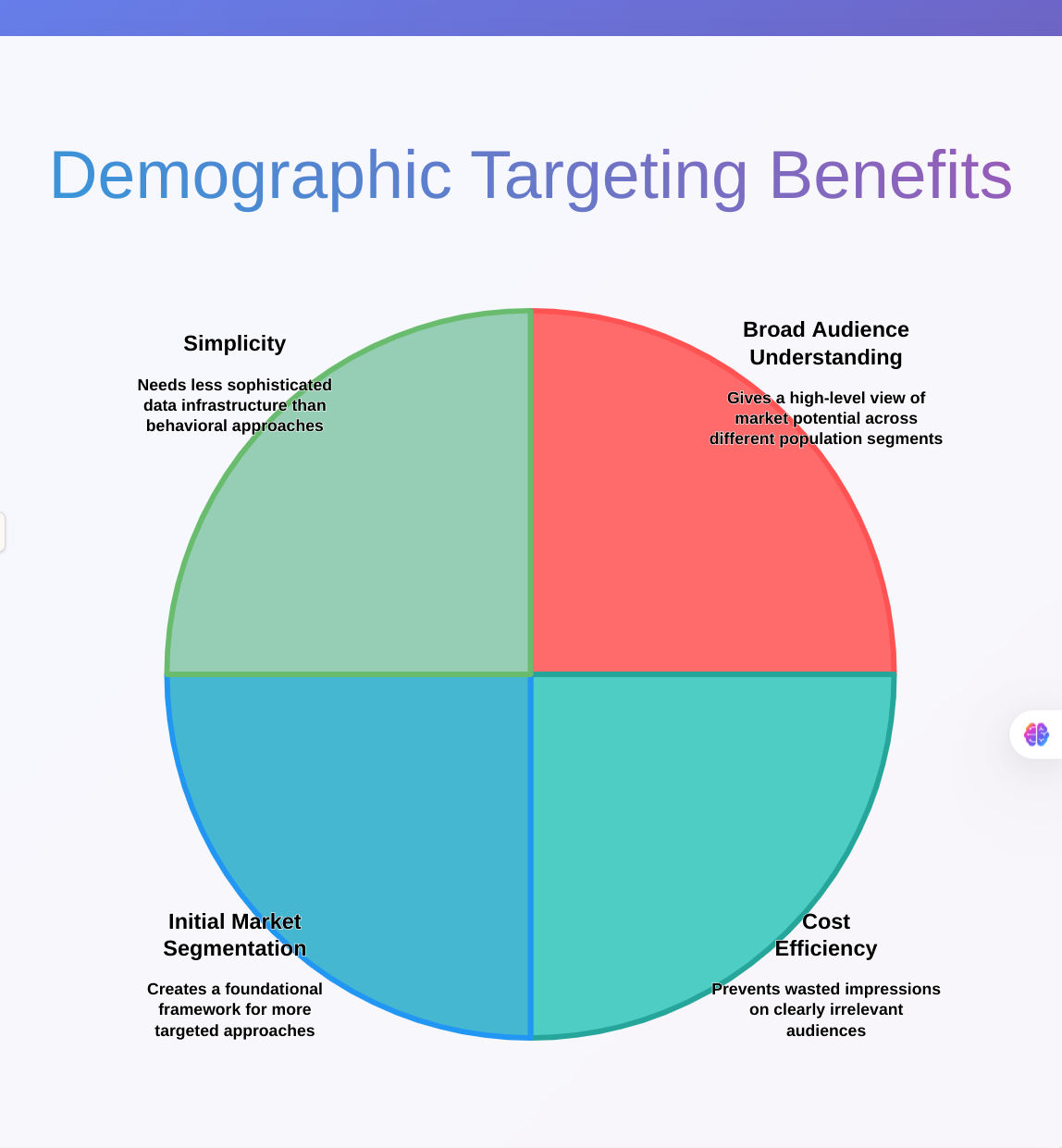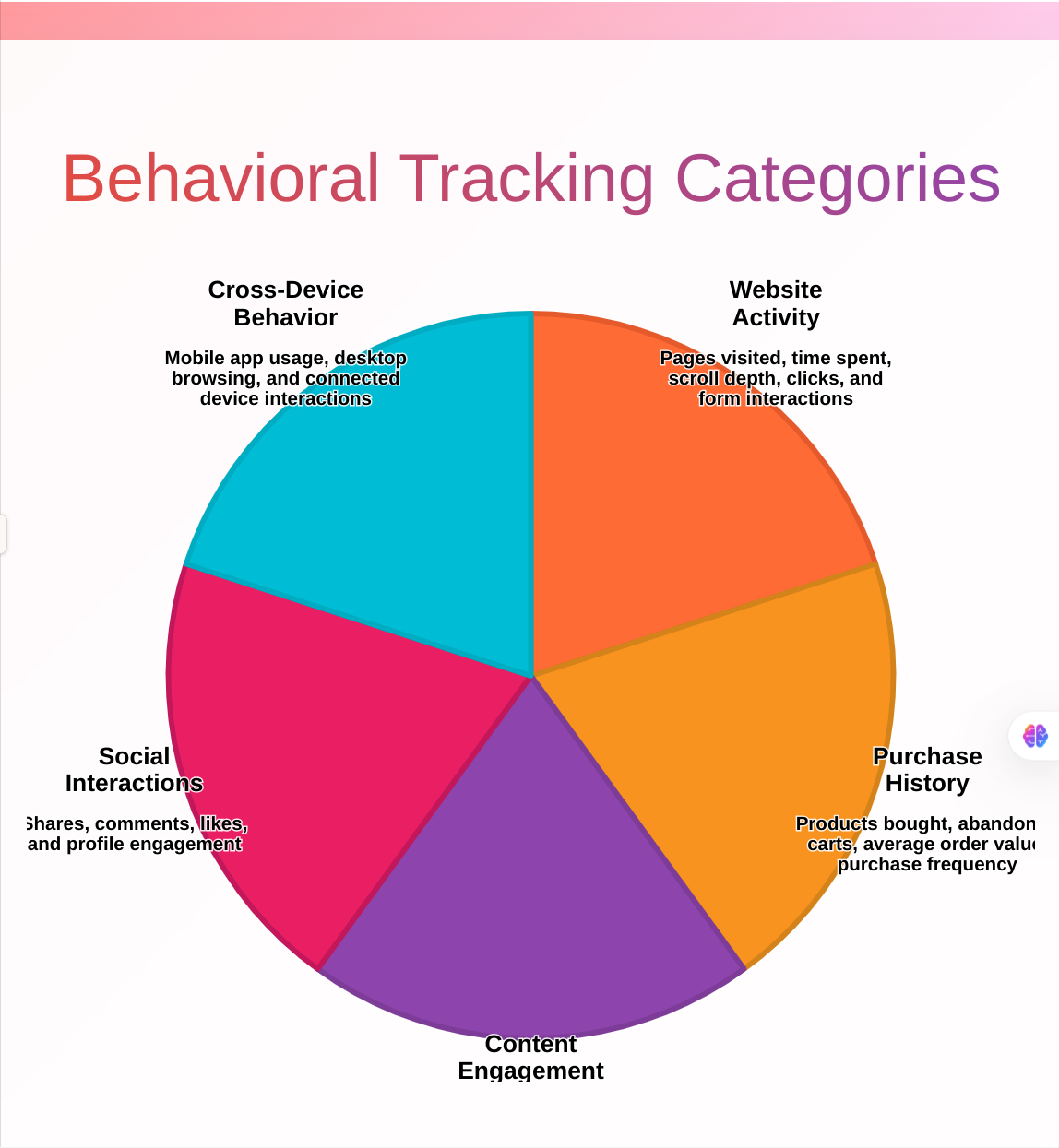Don’t limit yourself to demographic basics. AI-powered behavioral targeting achieves 91% effectiveness compared to traditional approaches. Discover how combining both creates a powerful hybrid model for maximizing conversions while addressing critical privacy considerations.
see our post on the implementation of AI in your business https://amzoraltd.com/what-specific-ai-search-features-should-i-prioritize-optimizing-for-now/
Key Takeaways:
- Behavioral targeting achieves a 91% effectiveness rate compared to traditional demographic approaches, making it the top choice for modern AI marketing strategies.
- Demographic targeting provides value for initial audience segmentation but lacks the personal touch needed to drive conversions.
- Content Marketing Agent helps companies implement AI targeting solutions that combine demographic basics with behavioral intelligence.
- Privacy considerations remain a major factor when implementing behavioral targeting strategies.
- Using both targeting approaches together creates a hybrid model that improves marketing effectiveness throughout the customer journey.
Why AI-Powered Behavioral Targeting Outperforms Demographics
Marketing has shifted from simply knowing customer identities to understanding their actual behaviors. This change has transformed brand-consumer connections, with AI-powered behavioral targeting leading this transformation. Marketing teams at Content Marketing Agent have seen how companies using advanced behavioral analysis consistently achieve better engagement compared to those using only demographic data.
The statistics are clear: Marketing Week reports that 91% of marketers found behavioral segmentation to be their most effective method, with 73% noting behavior has become more effective over five years. This preference shift reflects a basic truth about consumer psychology: what people do reveals their intentions more accurately than who they are.
Understanding Demographic Targeting
in AI Marketing
1. Core audience attributes (age, gender, income, location)
Demographic targeting forms the traditional base of marketing segmentation. This method groups potential customers by statistical characteristics such as:
- Age ranges (Gen Z, Millennials, Gen X, Boomers)
- Gender identity
- Income brackets and socioeconomic status
- Geographic location (urban, suburban, rural)
- Family status (single, married, with children)
These attributes create a broad framework for understanding who might want your products based on their life circumstances and statistical probabilities.
2. Key benefits of demographic segmentation
Despite newer approaches, demographic targeting maintains several advantages:
- Broad audience understanding: Gives a high-level view of market potential across different population segments
- Cost efficiency: Prevents wasted impressions on clearly irrelevant audiences
- Initial market segmentation: Creates a foundational framework for more targeted approaches
- Simplicity: Needs less sophisticated data infrastructure than behavioral approaches

3. Critical limitations of demographic-only approaches
Relying solely on demographic targeting creates several significant challenges:
- Oversimplification: Demographic groups contain diverse individuals with varying interests and behaviors
- Stereotyping risk: Can lead to tone-deaf messaging that alienates potential customers
- Outdated data: Life circumstances change frequently, making static demographic data quickly obsolete
- Limited predictive power: Demographics correlate with behaviors but don’t necessarily cause them
Consider two 35-year-old women living in the same neighborhood with similar incomes. One might be an avid hiker researching trail gear while the other collects vintage vinyl records. Their demographic similarity offers little guidance for effective marketing to their distinct interests.
4. When demographic targeting makes sense
Despite its limitations, demographic targeting remains valuable in specific scenarios:
- Market entry: When launching in new territories with limited behavioral data
- Products with clear demographic alignment: Age-restricted products (alcohol, retirement services)
- Compliance requirements: When regulations dictate specific demographic verification
- Initial data collection: As a starting point before behavioral data becomes available
Behavioral Targeting: The AI Marketing Advantage
1. How AI analyzes user actions across platforms
Modern AI-powered behavioral targeting systems track and analyze numerous user interactions:
- Website activity: Pages visited, time spent, scroll depth, clicks, and form interactions
- Purchase history: Products bought, abandoned carts, average order value, purchase frequency
- Content engagement: Downloads, video views, blog reads, email opens, and click-throughs
- Social interactions: Shares, comments, likes, and profile engagement
- Cross-device behavior: Mobile app usage, desktop browsing, and connected device interactions

AI systems find patterns within these behaviors to create predictive models that anticipate future actions and preferences. Unlike manual analysis, AI can detect subtle connections across thousands of behavioral signals simultaneously, showing insights humans might miss.
2. Key behavioral data points worth tracking
When implementing behavioral targeting, focus on these high-value data points:
- Purchase intent signals: Product page visits, pricing page views, comparison tool usage
- Engagement depth: Time on site, return visits, account creation, subscription sign-ups
- Content preferences: Topics viewed, preferred formats (video, text, interactive)
- Decision timeframes: Time between first visit and purchase, seasonal buying patterns
- Problem indicators: Support ticket submissions, negative reviews, cart abandonment
By tracking these behaviors, marketers can understand not just who their customers are, but where they are in their buying journey and what specific obstacles they face.
3. Converting behavioral insights into personalized experiences
The real strength of behavioral targeting appears when insights create personalized customer experiences:
- Dynamic content delivery: Showing different website content based on previous interactions
- Predictive product recommendations: Suggesting items based on browsing and purchase history
- Custom email sequences: Triggering specific messages based on abandonment or engagement
- Personalized retargeting: Tailoring ad creative to reflect specific product interests
- Adaptive pricing strategies: Offering discounts or bundles based on hesitation patterns
These personalized approaches consistently outperform demographic-based targeting. A customer who has viewed running shoes three times in the past week is much more likely to purchase them than someone who merely fits the demographic profile of a runner.
4. Privacy considerations in behavioral targeting
The power of behavioral targeting comes with important privacy responsibilities:
- Transparency: Clearly communicating what data is collected and how it’s used
- Consent management: Obtaining proper permissions for data collection and usage
- Data security: Implementing strong protections for sensitive behavioral information
- Regulatory compliance: Following GDPR, CCPA, and other privacy frameworks
Brands that balance personalization with respect for privacy build stronger customer trust while still using behavioral insights effectively.
ROI Comparison: Behavioral vs. Demographic Targeting
1. Conversion rate differences
When comparing targeting approaches, behavioral data consistently delivers superior conversion rates. According to Marketing Week’s research, 91% of marketers identified behavioral segmentation as their most effective methodology. This performance gap exists because behavioral data captures intent signals that demographic information simply cannot provide.
For example, a consumer actively researching a specific product category shows purchase readiness that no demographic attribute can predict with equal accuracy. While demographic targeting might identify someone who statistically resembles your typical customer, behavioral targeting identifies someone actively behaving like a customer ready to buy.
2. Engagement metrics comparison
Engagement metrics consistently show the superiority of behavioral targeting approaches:
- Email engagement: Behaviorally triggered emails achieve significantly higher open and click-through rates compared to demographic-based campaigns
- Content consumption: Content recommended based on past behavior sees substantially higher engagement than demographic-driven suggestions
- Advertising effectiveness: Behavior-based ad targeting delivers higher click-through rates and lower cost-per-acquisition
- Website interactions: Personalized experiences based on behavior increase average session duration and pages per visit
These engagement differences come from relevance and timing. Behavioral targeting delivers content when users have shown interest through their actions, creating natural alignment with their current needs and mindset. The 73% of marketers who reported behavior becoming more effective as a segmentation approach over five years have seen these engagement improvements firsthand.
3. Customer retention impact
Perhaps the most significant ROI difference appears in customer retention metrics:
- Repeat purchase rates: Behaviorally targeted customers show higher loyalty and more frequent purchases
- Customer lifetime value: Understanding behavioral patterns allows for more effective cultivation of long-term customer relationships
- Churn reduction: Proactive engagement based on behavior signals helps identify and address potential customer departure
- Brand loyalty: Customers receiving behaviorally relevant content report higher brand satisfaction
The retention advantage comes from recognizing and addressing customer needs throughout their relationship with your brand, not just during acquisition. By tracking behavior changes that signal potential churn and proactively addressing concerns, behavioral targeting helps maintain valuable customer relationships.
Implementing a Hybrid
AI Targeting Approach
1. Starting with demographic filters
A balanced AI targeting strategy begins with demographic foundations:
- Identify core demographic segments that represent your highest-value potential customers
- Establish baseline targeting parameters to efficiently allocate initial marketing resources
- Create demographic-appropriate messaging that resonates with different audience segments
- Set up demographic exclusions to prevent irrelevant exposure and wasted spend
This demographic foundation creates efficiencies by focusing behavioral analysis on your most promising audience segments rather than trying to analyze everyone’s behavior. AI tools can quickly process demographic data to establish these initial frameworks, providing a starting point for more sophisticated targeting.
A good tool for this is UserPilot which offers various tools for tracking customer profiles, customer segmentation, retention research, and product usage.
2. Layering behavioral data for precision
Once demographic foundations are established, AI systems excel at adding behavioral data:
- Track engagement patterns across all customer touchpoints
- Identify high-value behavioral segments within each demographic group
- Develop behavior-triggered communication flows for key customer journey stages
- Create content variants optimized for different behavioral signals
- Implement progressive personalization that increases with behavioral engagement
This layered approach delivers far better results than either targeting method alone. The demographic foundation provides structure and context, while behavioral data adds timing and relevance. Modern AI systems can manage this complexity at scale, analyzing millions of behavioral data points to identify meaningful patterns.
3. Using AI to identify high-value behavioral patterns
AI’s most powerful contribution comes from identifying complex behavioral patterns:
- Pattern recognition across thousands of user behaviors to identify predictive signals
- Propensity modeling to calculate purchase likelihood based on behavioral clusters
- Anomaly detection to identify both problems and opportunities in customer behavior
- Automated segmentation that continually refines based on emerging behavioral trends
- Predictive insights that anticipate needs before customers explicitly express them
These AI capabilities turn raw behavioral data into actionable intelligence that drives marketing performance. By identifying patterns humans might miss, AI creates targeting precision that manual analysis simply cannot match.
The Future Belongs to Behavior-First AI Marketing
Marketing trends clearly point toward behavior-first approaches powered by sophisticated AI. While demographics will continue providing valuable context and initial segmentation, behavioral data delivers the real-time insights needed for truly effective personalization.
As AI technology advances, behavioral targeting becomes more sophisticated, identifying subtle patterns and micro-behaviors that predict customer needs with remarkable accuracy. The 91% of marketers who identified behavioral segmentation as their most effective methodology aren’t simply following a trend—they’re responding to measurable performance improvements.
The most successful marketing strategies now combine demographic context with behavioral intelligence, creating a complete view of customers that includes both who they are and what they do. This hybrid approach recognizes that while demographics provide a starting point, behavior reveals the intentions, preferences, and needs that drive purchasing decisions.
In this behavior-first future, AI doesn’t just analyze data—it finds meaningful patterns that connect customer actions to underlying motivations. By understanding these connections, marketers can create experiences that feel personally relevant rather than generically targeted, building stronger customer relationships while driving better business results.
For businesses wanting to implement AI-powered targeting solutions that combine demographic foundations with behavioral intelligence, Content Marketing Agent provides comprehensive tools and expertise to transform your marketing strategy.



Pingback: Customer Journey AI Personalization Marketing Techniques